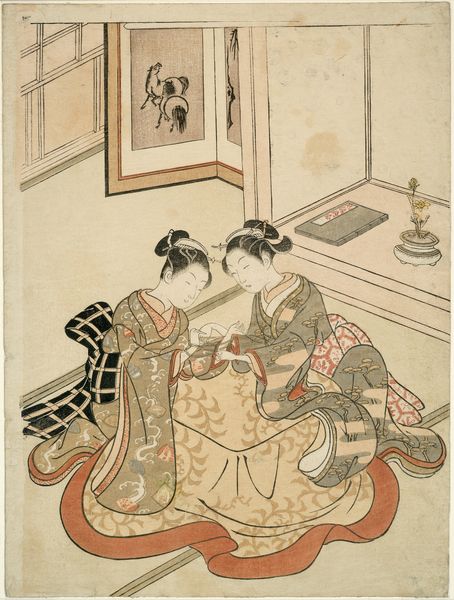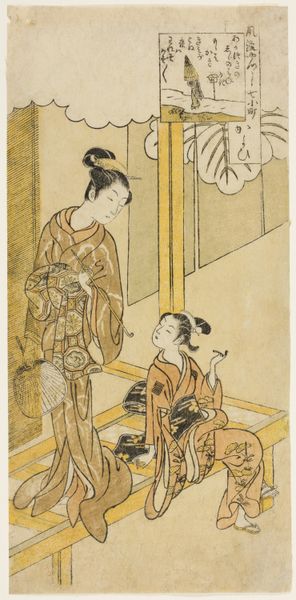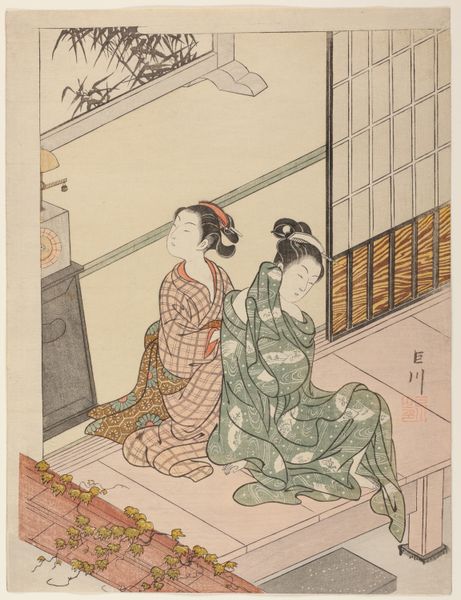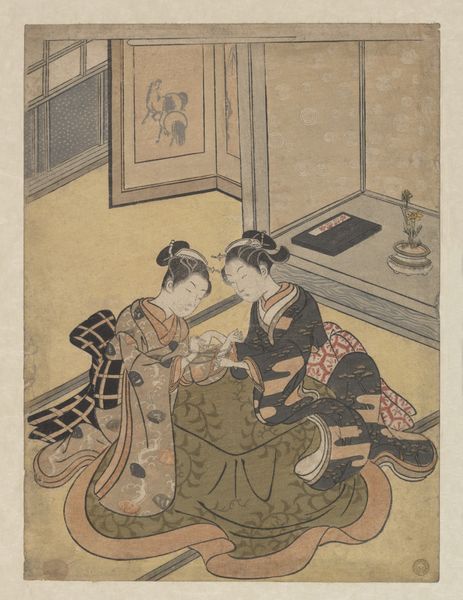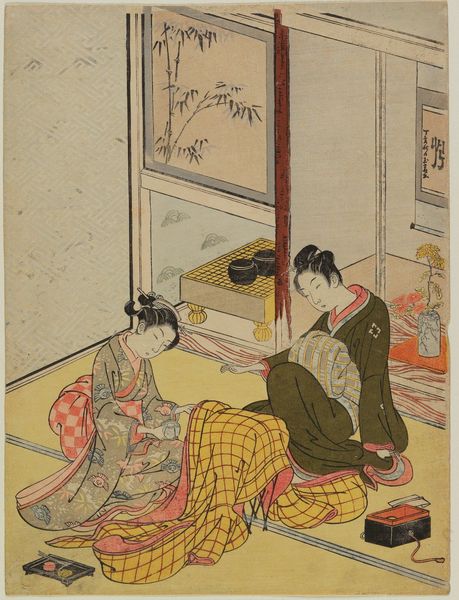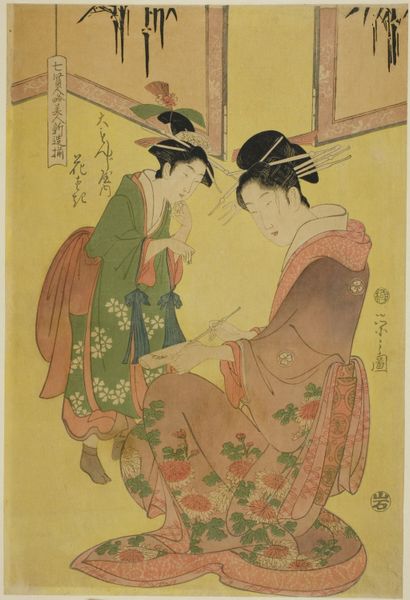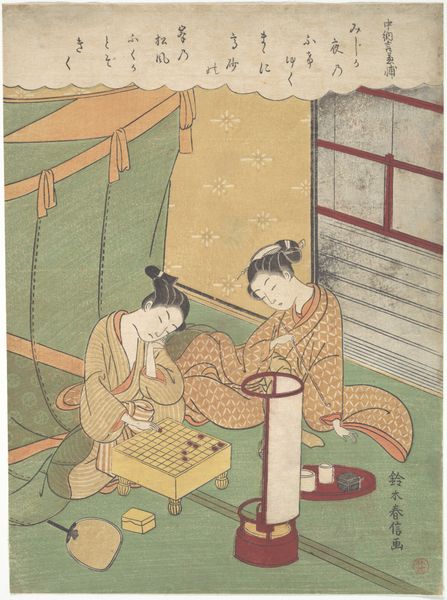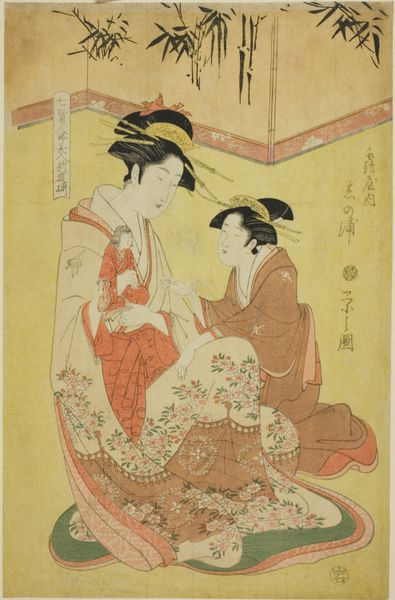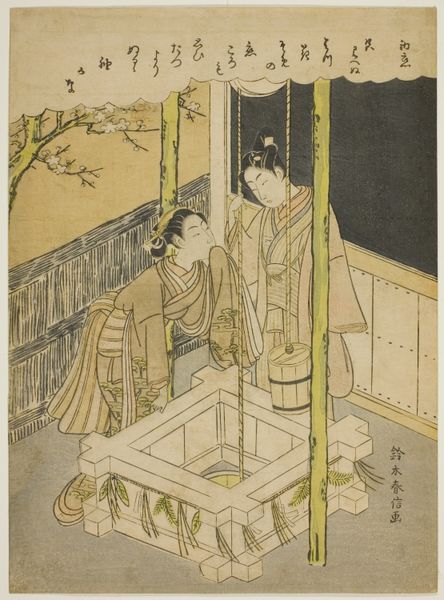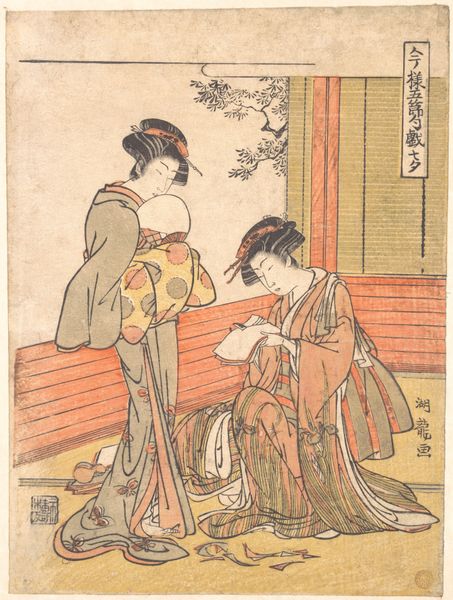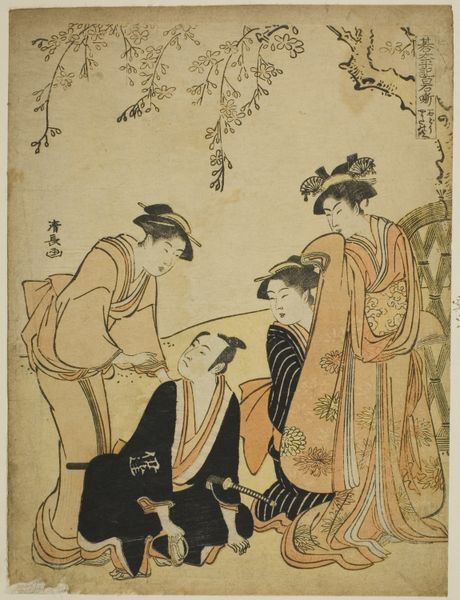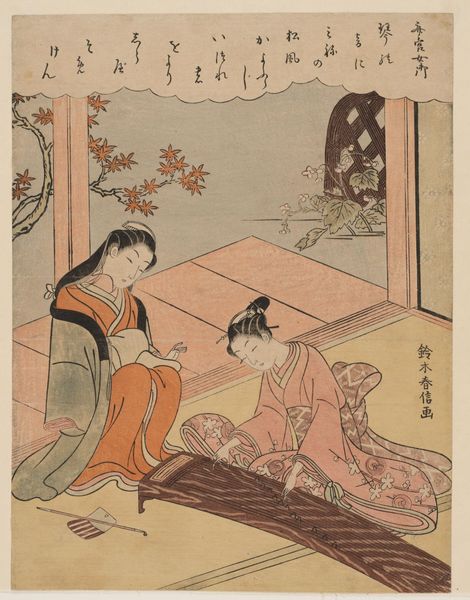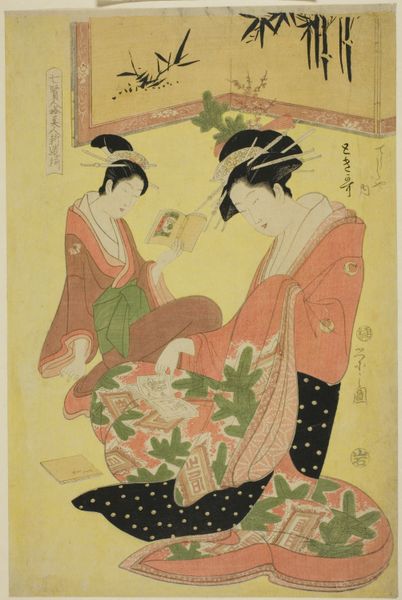
Two Young Women Seated by a Kotatsu Playing Cat's Cradle 1755 - 1775
0:00
0:00
print, textile
#
portrait
# print
#
asian-art
#
textile
#
ukiyo-e
#
genre-painting
Dimensions: H. 11 1/4 in. (28.6 cm); W. 8 1/8 in. (20.6 cm)
Copyright: Public Domain
Curator: Here we see Suzuki Harunobu's "Two Young Women Seated by a Kotatsu Playing Cat's Cradle", made sometime between 1755 and 1775. The piece, rendered as a print, exudes a quiet domesticity. What strikes you about it? Editor: I am captivated by the ordinariness of the scene. They’re simply playing a game; you see this beautifully captured in the textile, how would you look at that in light of this particular work? Curator: I am drawn to the kotatsu, that central, heated table. It represents a space of labor and consumption, doesn't it? Note the patterns on their kimonos – carefully chosen, meticulously crafted. They are part of a larger textile industry. Ukiyo-e prints like this served as advertisements of sorts, promoting certain styles. How do the garments contribute to your interpretation of social status or leisure? Editor: I hadn't considered the role of the print as advertising. I see it differently now, that those fabrics really jump out at you as desirable objects. How about the book up in the upper right corner? Would it also have any kind of contribution to the status of these individuals? Curator: Absolutely. The inclusion of the book signals literacy, itself a sign of privilege and a cultural commodity. Its presence adds another layer to our understanding of these women's place in society and suggests perhaps this kind of domestic space serves as a backdrop for scholarly activity. Do you think its inclusion enhances the commercial value of the image, portraying a lifestyle worth aspiring to? Editor: Yes, I do. This print gives value to their world and making it so people can appreciate their everyday life. Now I have a better picture of the print as being of the lifestyle more broadly. Curator: Precisely. The focus on materials and their production transforms this from a simple genre scene into a window into the economic and social structures of the time. Editor: I agree. Thinking about this Ukiyo-e print as part of a wider production line changes my perception of the work completely. Thank you for opening my eyes to that aspect of it.
Comments
No comments
Be the first to comment and join the conversation on the ultimate creative platform.
